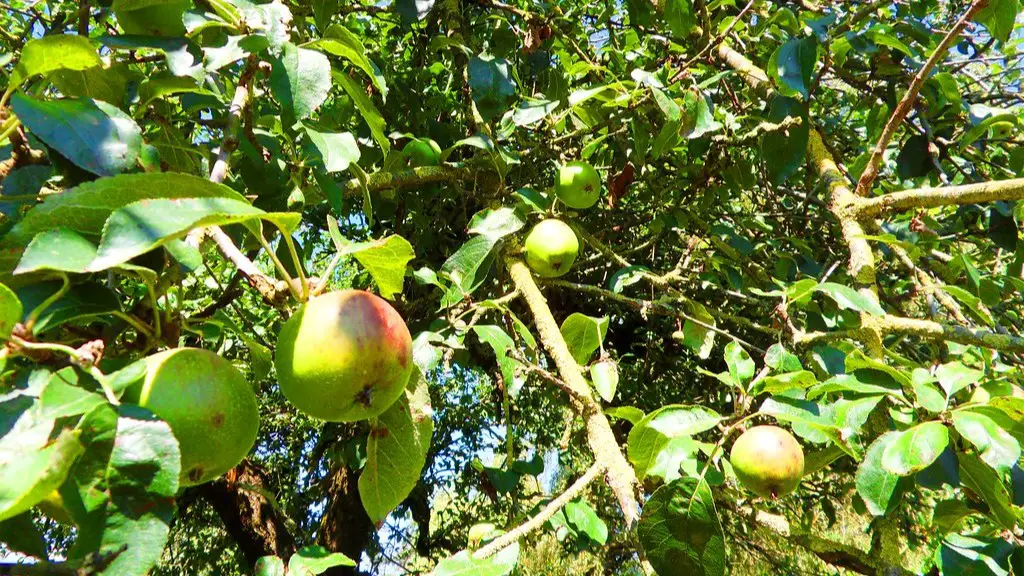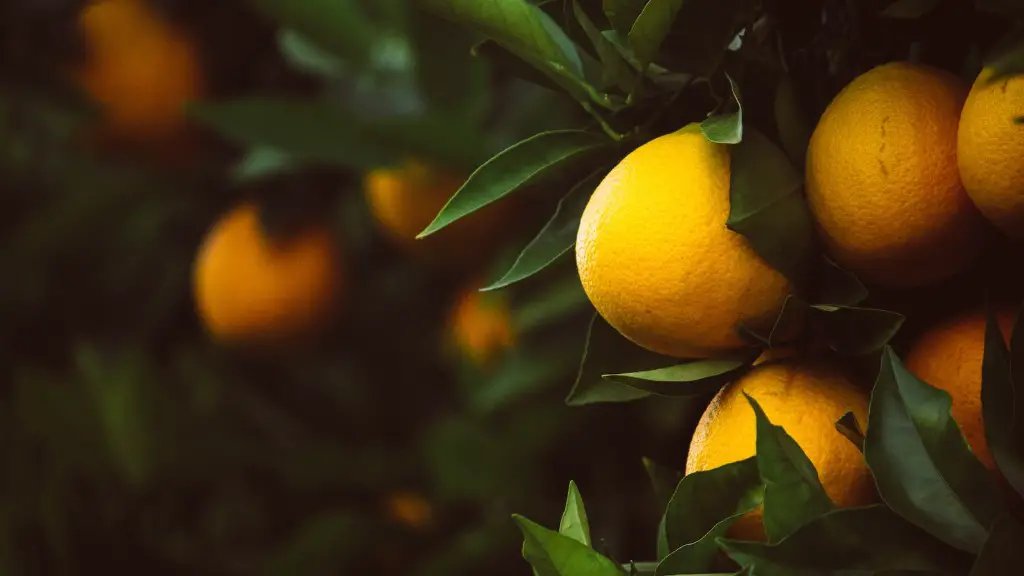An apple tree is a beautiful addition to any yard and with proper care, will provide fruit for many years. The first step in taking care of an apple tree is to choose the right variety for your area. There are dozens of different types of apple trees, and each one thrives in different conditions. Once you’ve selected the perfect tree, it’s time to plant it. Be sure to dig a wide hole, at least twice the width of the tree’s roots. Gently remove the tree from its pot and place it in the hole, filling in with loose, well-draining soil. Water thoroughly.
To keep your apple tree healthy, water it deeply once a week during the growing season and fertilize it yearly with a balanced fruit tree fertilizer. Prune the tree annually to remove any dead or diseased branches and to promote new growth. And finally, be patient! It will take a few years for your tree to mature and bear fruit, but it will be worth the wait.
The first step is to find a good location for your apple tree. The tree will need full sun and well-drained soil. Once you have found the perfect spot, dig a hole that is twice the width of the tree’s root ball.
Next, you will need to Amend the soil with compost or manure. This will help the tree to grow. After amending the soil, you can place the tree in the hole and backfill it with the amended soil.
Once the tree is in the ground, it is important to water it well. Apply Mulch around the tree to help with moisture retention. You will need to water your apple tree regularly, especially during the first year.
Apple trees need to be pruned every year to encourage growth. You should prune the tree in early spring, before the tree starts to grow.
Finally, you will need to fertilize your apple tree every year. Use a fertilizer that is high in nitrogen. Apply the fertilizer in early spring, before the tree starts to grow.
How do you keep an apple tree healthy?
Good air circulation is important for preventing apple tree pest and disease problems, because many pests and most fungal spores need dark, damp, and warm conditions to thrive. Correct annual pruning ensures that every branch of your tree has access to sunlight, so that the apples on each branch can properly ripen and colour.
Spray oil and copper soap can help control certain pests and diseases on fruit trees. Myclobutanil is effective against brown rot and cedar apple rust.
How do you take care of a first year apple tree
It is important to water young apple trees regularly to establish the root system. Mulch should be renewed each year, but pulled away from the tree in the fall to prevent rodents from nesting over the winter and eating the bark. Apple trees require training to build a strong frame of branches that can bear the weight of heavy apple crops.
Apple trees need to be prepared for winter in order to ensure a good crop the following year. Some things that need to be done in order to prepare apple trees for winter include:
-Clean up around the trees, removing all fallen fruit and dead leaves
-Refrain from fertilizing in the fall
-Do not over prune
-Apply a pest barrier
-Mulch around the trees
-Paint the trunks white and create tree guards
-Keep the trees well-watered
-Harvest any lingering fruits
What helps apple trees grow?
Apple trees need full sun, a good amount of space, loamy soil, and a neutral soil pH. A soil test can be obtained for a small fee through your local USDA cooperative extension office.
Spring is the best time for fertilising fruit trees, because that’s when they need plenty of energy to push out new leaves and nurture baby fruits. Fertilising fruit trees in spring helps them to grow strong and produce lots of fruit.
How do I keep bugs off my apple tree?
There are a few things you can do to help keep bugs off of your fruit trees:
1. Set up a pest barricade. This will help to keep pests from getting to your trees in the first place.
2. Plant sticky traps around your trees. These trap pests and keep them from getting to your fruit.
3. Spray your trees with a natural pesticide. This will help to kill any bugs that are already on your trees.
4. Keep your trees pruned and trimmed. This will help to keep pests from being able to hide in your trees.
The primary objective of spraying apple trees is to prevent insect damage to the fruit. The most important period to spray apple trees is from petal drop until just prior to harvest.
What do you spray on apple trees for bugs and worms
If you have an apple tree, it’s important to spray it with a pyrethrin-based spray in early spring, before the tree begins to bloom. This will kill any codling moths that may be emerging from their cocoons. Bonide Orchard Spray and Monterey Take Down are two products that will work well.
Apples are self-unfruitful, meaning that they need to be cross-pollinated in order to produce fruit. Plant at least two different apple tree varieties within 50 feet of one another for a good fruit set. Some apple varieties, such as Golden Delicious, will produce a crop without cross-pollination from a second variety.
How do I encourage my apple tree to produce fruit?
Apples and pears need to be cross-pollinated in order to produce fruit. This means that you must plant two different varieties of each in order to get a good crop. There are also some varieties that produce sterile pollen and need to be planted with at least two other varieties in order to be effective.
Winterizing fruit trees is a simple process that helps to ensure the health and viability of the trees. By taking a few extra minutes in the fall to prepare the trees for the winter months, you can help to prevent damage and improve the chances of a successful harvest in the spring.
Should I cover my apple tree from frost
There is no need to cover up fruit trees in winter. Most fruit trees are hardy and can survive the cold weather. However, if you have an early budding tree that blooms in early spring, it is best to cover it up to prevent the blossoms from freezing.
There are a few different methods that can be used when fertilising apples and young pear trees. One method is to use a potassium-rich general fertiliser in late winter as directed by the manufacturer. Another method is to use Growmore fertiliser. Whichever method you choose, be sure to follow the directions carefully in order to get the best results.
What do you spray on apple trees in the winter?
Spraying sulfur mixed with either Superior or horticultural oil in early January is a great way to protect your trees from pests. Using copper or sulfur in mid-to late February will help to keep your trees healthy and prevent problems with pests. If you used copper in the fall, be sure to use sulfur in February, or vice versa. Combining copper and sulfur in the same tank can minimize the risk of damage to tree bark.
We would recommend using Ferti-Lome Fruit, Citrus and Pecan Tree Food 19-10-5, as Miracle-Gro Water Soluble All Purpose Plant Food is not labeled for fruit trees.
Final Words
When it comes to taking care of an apple tree, there are a few key things you need to do to ensure its health and bountifulness. Firstly, make sure to plant your tree in an area that receives plenty of sunlight throughout the day. Secondly, water your tree regularly and deeply, especially during hot or dry periods. Thirdly, fertilize your tree every few months using a good quality fruit tree fertilizer. Lastly, prune your tree regularly to encourage new growth and to remove any diseased or damaged branches. By following these simple steps, you will be sure to have a healthy, happy apple tree that will produce plenty of delicious fruit for you and your family to enjoy.
To take care of an apple tree, you need to provide it with water, sunlight, and nutrients. You also need to prune it regularly and protect it from pests and diseases.




